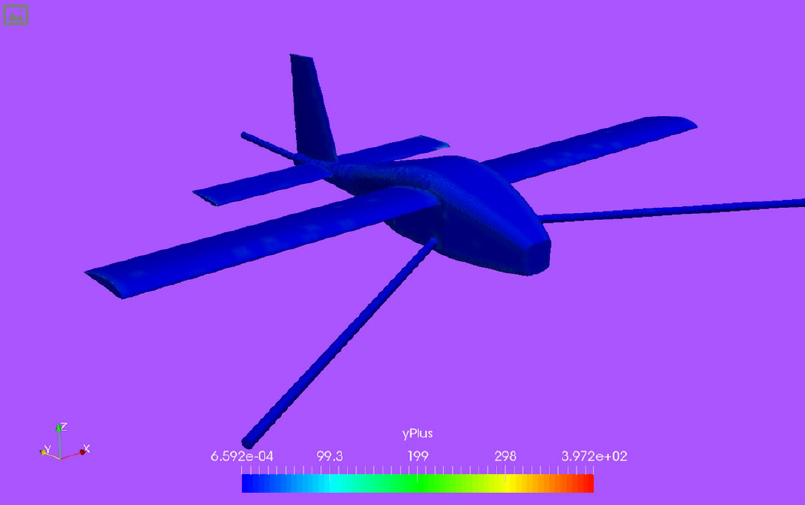
An Aerodynamic Property Investigation of an Unmanned Aerial Vehicle (UAV) in case of Forward Flight by Numerical Approach
- Department of Aerospace Engineering, Ho Chi Minh City University of Technology (HCMUT) – Vietnam National University (VNU), Ho Chi Minh City, Viet Nam
- Department of Mathematical Sciences, RMIT University, Australia
Abstract
In the golden era of digitalization, flow calculation research based on a numerical approach has become increasingly popular in the scientific world and has played a vital role in revealing the aerodynamic characteristics of various aircraft models. This paper, belonging to computational fluid dynamics, describes the process and results of a numerical simulation approach using the software OpenFOAM for an unmanned aerial vehicle (UAV) in the case of forwarding flight with a low Reynolds number. With regard to the numerical approach, the aerodynamic properties are investigated through the turbulence model k-ω-SST (shear stress transport), which is a part of the turbulence calculation approach Reynolds average Navier–Stokes (RANS). Furthermore, the entire process of mesh generation and the numerical calculation process by simpleFoam in OpenFOAM, which is the solver using the semi-implicit method for pressure-linked equations (SIMPLE) algorithm for steady, incompressible flow, are also depicted in this paper. In addition, the characteristics of the flow field surrounding the model and the characteristic aerodynamic coefficients (drag coefficient, lift coefficient, lift-to-drag ratio versus angle of attack and pressure coefficients, and skin-friction coefficients for special positions on the wing) of the model are also clearly illustrated. Finally, the simulation illustrations in ParaView, including the velocity field, pressure field and vortices in the stagnation region, are shown. The process description and results contribute a clear picture of the numerical execution steps in OpenFOAM and aerodynamic knowledge for a particular unmanned aerial vehicle model to the computational fluid dynamics field in the aerospace industry.

